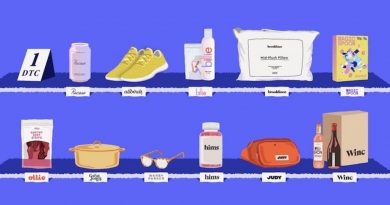Fashion Briefing: How Jenni Kayne’s new store concepts are driving its growth
In this week’s briefing, we take a look at the growth of Jenni Kayne, including how retail is helping the company grow. Plus, a new fund aims to help artisans and small businesses, and the state of profits at some of luxury’s biggest companies is a mixed bag.
Womenswear designer Jenni Kayne has been on a tear.
The 20-year-old brand, which Kayne founded as an apparel brand in California after dropping out of college, has grown into a lifestyle empire with womenswear, beauty and home goods and 29 U.S. stores. All of it lives under Pacific Group, the Kayne family-owned business formed in 2022 to encompass Jenni Kayne, Jenni Kayne Home and Oak Essentials. Its revenue has grown from $120 million in 2022 to over $140 million last year, and the company — which focuses on DTC sales — is profitable.
The growth of Jenni Kayne’s brand has been due, in part, to the support of king-making celebrities like Meghan Markle and Emma Stone. Kayne’s embrace of the quiet luxury trend that has defined fashion for the last two years has also been a factor.
According to Kayne, the brand’s stores are the most important engines of future growth. The most recent opening was a boutique in Carmel-by-the-Sea in California, which will be followed by the fall opening of the Farmhouse, a concept shopping experience and hospitality venture in Upstate New York. The Farmhouse builds on the Jenni Kayne Ranch, a similar combination of hotel and store that opened in Santa Ynez, California in 2022.
The Farmhouse will feature the Oak Essentials Wellness Club, a first for Jenni Kayne. The area will sell products from the brand’s 3-year-old beauty brand, Oak Essentials, and offer esthetician services and Pilates classes to guests. Kayne called the Farmhouse and its Wellness Club “a true wellness haven” showcasing everything the brand has to offer.
According to Kayne, opening new stores and physical spaces with unique concepts will continue to be a theme for the brand.
“We have consistently opened around five stores a year for the last several years — a trend that really stemmed from us wanting to tap into new markets and bring our world to life through the in-person retail experience,” Kayne said. “E-commerce is such a crucial part of our business, but when you walk into one of our stores, you really understand and feel what the brand is all about.”
Stat of the week
24%
That’s how much Moncler’s profits rose last quarter, as the Italian company reported late on Wednesday. That’s a far cry from the 50% drop in profits that fellow luxury company Kering reported on the same day. The day before that, LVMH reported a 14% decrease in the same metric. While the rest of the luxury market may be in a down period, strong performance in China helped Moncler stave off the business issues affecting the rest of the sector.
New funding for handcrafted goods
On July 18, the American non-profit Nest announced the launch of the Makers Future Fund. Nest focuses on connecting craftspeople and artisans with brands and retailers — its partners have included Amazon, Anthropologie, Crate & Barrel and Gap.
“This program has been designed to respond to a challenge faced by makers across the U.S.: small business financing,” said Rebecca van Bergen, Nest’s founder and executive director. “By combining business development grants with expert coaching and peer support, we are equipping creative entrepreneurs with resources for success, which will make our communities more vibrant, beautiful and inclusive.”
Nest says the fund will help around 60 artisans per year to create long-term financial projections and future-proof their businesses. The fund also has the backing of major companies including Pinterest, fintech company Block and Etsy — though the latter has specifically been accused of alienating makers of handmade goods on its platform in recent years.
The handicraft market in the U.S. is already quite large at over $331 billion in annual sales. Etsy alone accounts for nearly $3 billion of that market. But the sales of handcrafted goods are expected to more than double to $744 billion in the next eight years.
Raising funds has been an increasingly volatile experience for founders over the last two years. Executives have told Glossy both on the record and anonymously that trying to get funding for anything (other than AI) has been incredibly difficult as investors want immediate profits and are skeptical of new ideas.
Executive moves
Vanessa Wallace, formerly head of brand marketing at Nike, was appointed CMO at Rihanna’s Savage x Fenty.
Sergio Rossi announced CFDA award-winning designer Paul Andrew as its new creative director on Wednesday.
And on Monday, Peter Hawkings, who was appointed creative director at Tom Ford in April of 2023, announced his departure after only a single fashion season.
Inside Glossy’s coverage
Mango CFO Margarita Salvans on the brand’s collaboration strategy and retail rollout
How Farm Rio customizes its products and operations for each market
Other news to know
Shein to open pop-up store in South Africa to woo more shoppers
Milan Fashion Week schedule shuffles the deck but has just a handful of surprises
Investors pressure LVMH on labour rights after Dior linked to Italian sweatshops

